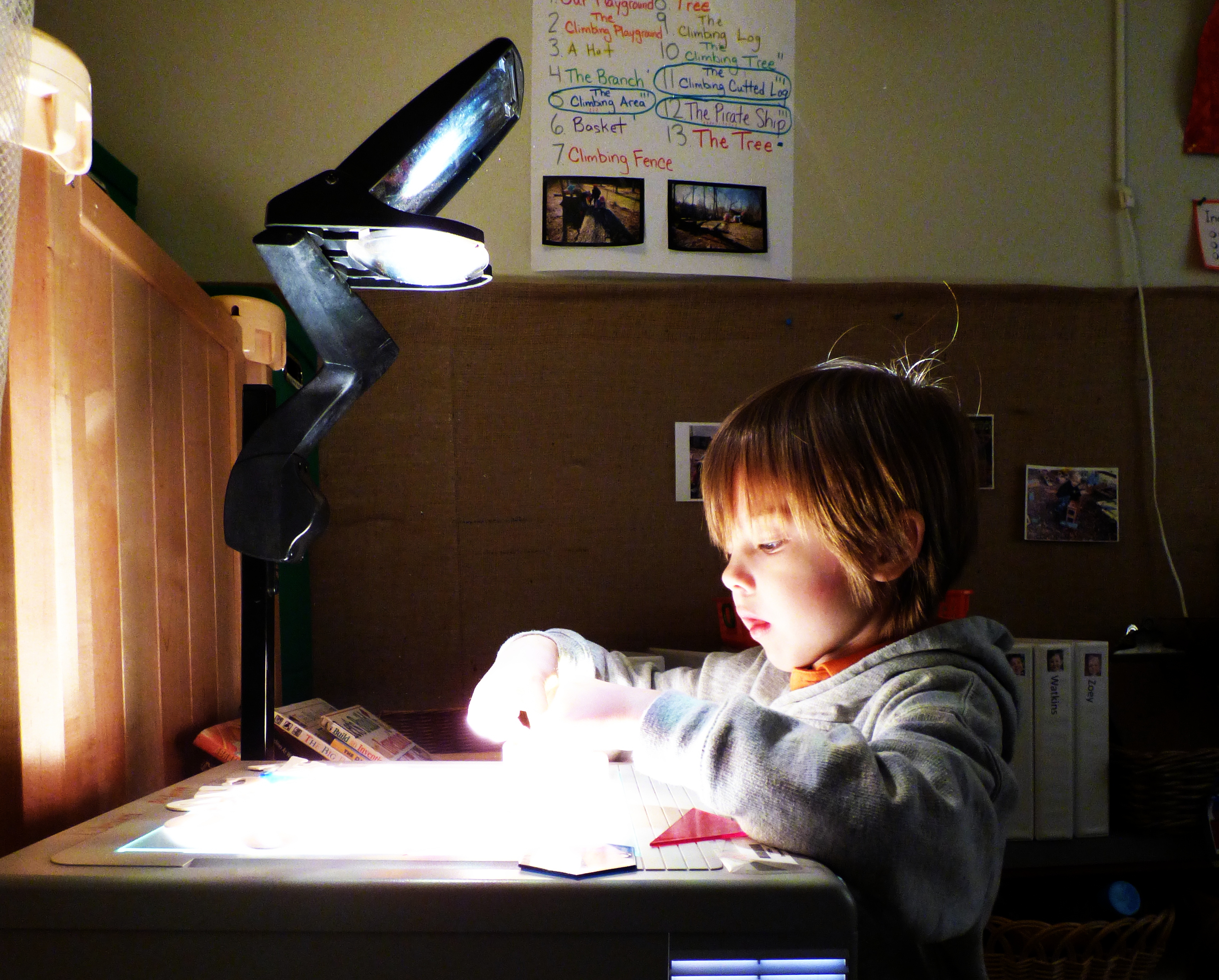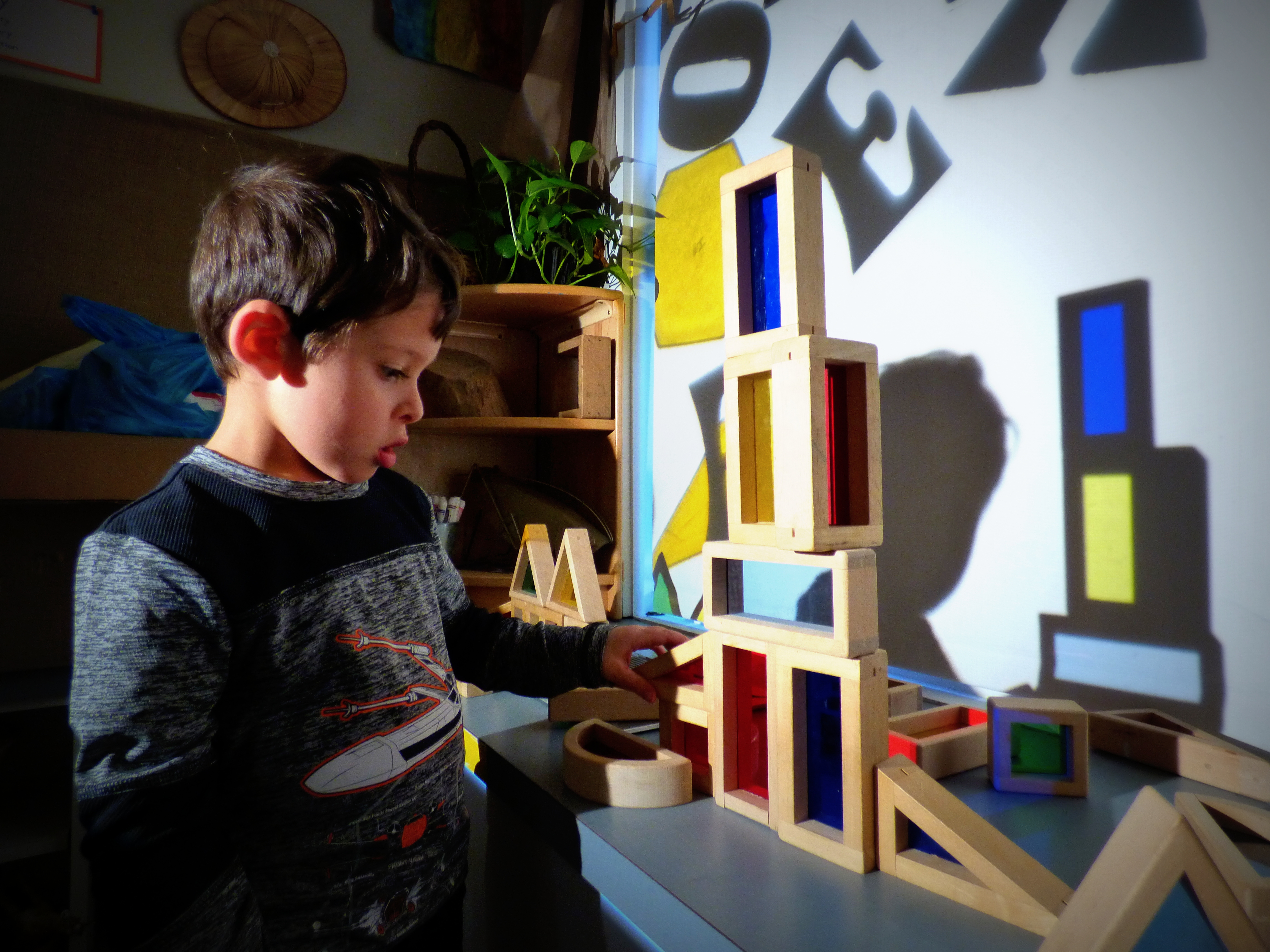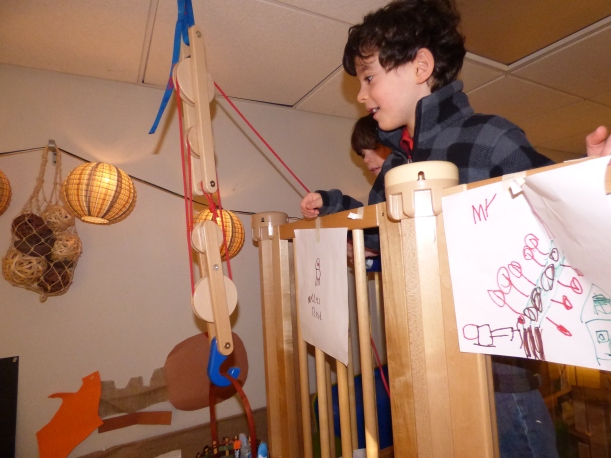Where does the water go?
A while ago, one of the students posed a curious question about what happens to the water after it rains. We discussed many possibilities, but eventually came to the conclusion that somehow it ended up in the clouds. One of the most creative methods for this molecular travel was via invisible pipes in the trees that carry the water from the ground to the sky.
This week, we read more information about where water goes and how it travels. The water cycle made sense, but it was still a bit confusing. Hmmm…maybe a little music can help?
Enter Tom Chapin’s The Wheel of the Water:
Following the song, we made up our own motions to help us remember the journey of water as it recycle’s across our planet. This song has now become an oft requested favorite.
Yesterday, I asked the children to write about their favorite part of the water cycle.
Luckily, the weather has been cooperative, providing lots of direct observation opportunities. Who knew playing in the rain could garner so much learning?
Hour of Code 2016
Today Pre-k participated in our fourth annual “Hour of Code” event. We didn’t actually spend an hour on the project, but the computer programming that we played with was lots of fun! The instructors (Mrs. Kate Weber and Dr. Anne Faye, our Director of eLearning) explained that computer programming was as simple as giving someone or something directions. After a quick practice with paper arrows and maze, the children moved on to Kodable, an iPad app with similar parameters. For this task, the children directed a fuzzy creature through mazes while practicing planning, problem solving, the Scientific Method and visual-spacial skills.

If you are more curious about Hour of Code, check out Computer Science Education Week. Here is a short introduction found within their site:
We live in a world surrounded by technology. And we know that whatever field our students choose to go into as adults, their ability to succeed will increasingly hinge on understanding how technology works. But only a tiny fraction of us are learning computer science, and less students are studying it than a decade ago.
That’s why schools across the nation joined in on the largest education event in history: The Hour of Code. During Computer Science Education Week (Dec. 8-14), students will be amongst over 2 million worldwide spending one hour learning the basics.
See http://hourofcode.org for details.
Shadows
Outside, a few children noticed that their shadows were very tall. I asked them why their shadows kept following them around. That question led to lots of silly experiments and many more questions. Someone mentioned that their shadow was longer on the blacktop than on the sidewalk and led us to wondering why. We attempted to trace our shadows with the supplies at hand, some sandstone we found laying around, but found it was too difficult to make a mark. We’ll certainly need to gather some chalk before we go out to investigate again.
With the interest in shadows, we pulled out our old fashioned, non-digital projector and set it up in the construction area. Mrs. Pless added a few materials and we let them explore on their own.

Most of their focus has been on what happens when materials are placed on the lighted top of the projector. Placing a transparent color shape, they will quickly turn around to see how it changes the projection on the blinds. Only a few children have noticed the changes they can make by building with the see-through blocks in FRONT of the blinds.

So far, none have noticed their own shadows now visible on the blinds. It will be interesting to see how it changes their play once they’ve discovered their own shadows.
Oh, the Squishiness of STEM
[youtube https://www.youtube.com/watch?v=3KORLpwhueA]
Flying Machines
Our interest in flying birds has sparked an avalanche of engineering ideas. One student suggested that the best way for us to study the birds would be to build a flying machine. This way we could observe our feathered friends more closely.
Many of the children have begun creating prototypes (their word, not ours).
On another day we asked them what materials they would need for their machines. (We want to make sure we’re prepared!)
“metal, string, more metal, and gas”
“We have to do little wires to make them work.”
“very small metal pieces”
“We need some wire that carries electricity to keep the boosters working.”
“We need a plug as big as this building so we can go far.”
“Or, we need to make a fire on a stick and it attaches to the wire.”
“We can make a seat out of fabric.”
“We need shirts to make a buckle, it buckles in front and in back.”
“June is when the birds come out.”
“We need a parachute and a lighter, in case the boosters go out.”
“And metal cages to catch the bird, with food in it.”
“fabric for the wings”
“We need feathers for the wings.”
“space gears”
Heave-ho, me hearties!
When the students came back from winter break, they noticed that something new was added to the loft. They spent most of the morning studying the contraption and making guesses about how it could be used. The hook seemed to be the most recognizable part of the tool and it quickly was decided that it had to be an anchor. After some exploration, we sat down with the students to explain that the new tool was called a pulley and it was used for carrying various items from the top of the loft to the bottom and vice versa. The students spent a few minutes learning how to use the tool safely and troubleshooting how we could safely attach the rope to the loft. Then it was time to test it out!
STEM and Art
“To a child, the world is filled with endless possibilities. They learn through art what will work and what won’t. Because there is not one right answer, art presents an opportunity to be creative problem solvers or “risk takers” and meet challenges in new ways. A majority of young children will most likely NOT grow up to be the next Picasso but being exposed to appropriate art experiences from the earliest years promotes divergent thinking skills — valuable for future scientists, mathematicians and engineers. ”
STEM anyone?
How lucky we are to have the freedom to follow the ideas, questions and curiosity of children. During morning meeting Monday one student decided to shake elbows instead of hands with a friend. She gave a very particular reason. She said that her “molecules would get on” her friend.
Molecules?
What an interesting turn in the conversation. (We were planning to discuss the morning message; words that begin with the /h/ sound.)
Stop the presses! Scrap the letter H. We’re off to microbiology!
So of course our next question was, “What is a molecule?” Right away, we had hands up in the air. “Molecules full of dirt that could make a person sick.”
The example we gave them involved a little bit less germs.
If one boy stands up, he is a student. If everyone in the group stands up, they are a class. Are they a class by themselves? No, but when you put a bunch of students together, they are a class.
Now look at the skin on the back of your hand. Your skin is made of millions of skin molecules. They are too small to see when we look with our eyes. If one skin molecule was hanging out on the back of your hand, would it be like the skin you have now? No. It takes many skin molecules to make the skin you see, just like it takes many students to make a class.
Rapt eyes and engaging questions followed the discussion of our skin molecules. We asked what our hair might be made of. “Hair molecules!” Of course! They discovered that everything in our body was made of special molecules that make different parts. Then they noticed Mrs. Forst’s ring. Guess what it is made of….metal molecules! How about the easel? Wood molecules! What about a basketball? (Uh-oh, a bit of confusion here.) “Wood molecules!”
Sounds like we might need to take a closer look at the materials that make up our world.


